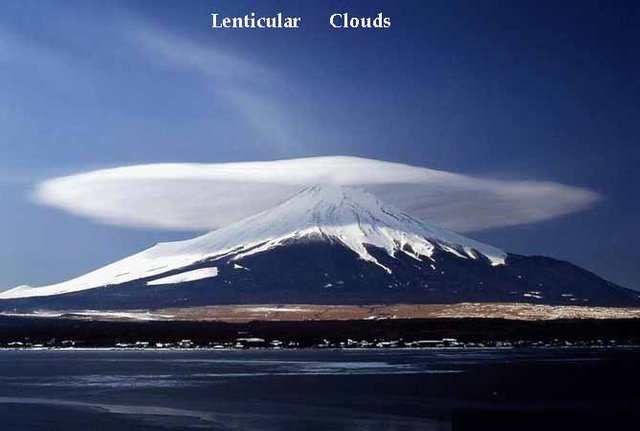What To Know About Lenticular Clouds: how they are form and how pilots avoid it when in air

The Lenticular clouds are stationary clouds that form in the troposphere(troposphere is the lowest layer of earth's atmosphere, and is also where mainly all weather conditions take place), which are always perpendicular in alignment to the wind direction. Lenticular clouds indicate great instability in the layers of the atmosphere
Formation and appearance
How the lenticular cloud forms
When the air travels along the surface of the Earth, there are various obstructions which are often encountered during this process. These includes both natural features in the Earth, such as mountains, hills, and man-made structures, such as the sky scrapers buildings and other structures. These disrupt the flow of air into "eddies", or areas of turbulence influenced by these obstructions.
When stable air and moist flows over a larger eddie, like those which are caused by mountains and hills a series of large-scale waves form on the leeward side of the mountain. When the temperature at the crest of the wave drops below the dew point, moisture in the air will condense at that particular side to form the lenticular clouds.
Under some certain or unforseen conditions, long strings of lenticular clouds can form near the crest of each successive wave, creating a formation known as a wave cloud. These wave systems can produce large updrafts, occasionally enough for water vapour to condense which will produce precipitation.
Lenticular clouds have been mistaken for UFOs particularly in the shape of a flying saucer, because these clouds have a characteristic lens appearance and smooth saucer-like shape; also, because lenticular clouds generally do not form over low-lying or flat terrain, many people may have never seen one before and don't know that they can exist. Bright colours (called iridescence) are sometimes seen along the edge of lenticular clouds.
During Flight; How pilot avoid it
When ever pilots are in the air,they try all means to avoid flying near lenticular clouds because of the turbulence of the rotor systems that follow them, but glider pilots actively seek them out due to the fact they don't go high as other aircraft do. The precise location of the rising air mass is fairly easy to predict from the orientation of the clouds. Wave lift of this kind is often very smooth and strong, and enables gliders to soar to remarkable altitudes and to a great distances where there are no lenticular cloud because as one see them it is calm in appearance but dangerous in reality
Thanks for reading

Hi! I am a robot. I just upvoted you! I found similar content that readers might be interested in:
https://en.wikipedia.org/wiki/Lenticular_cloud